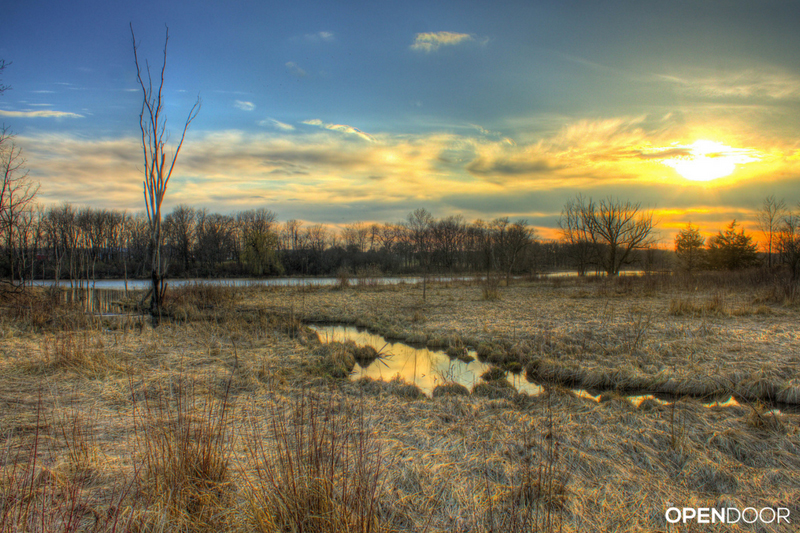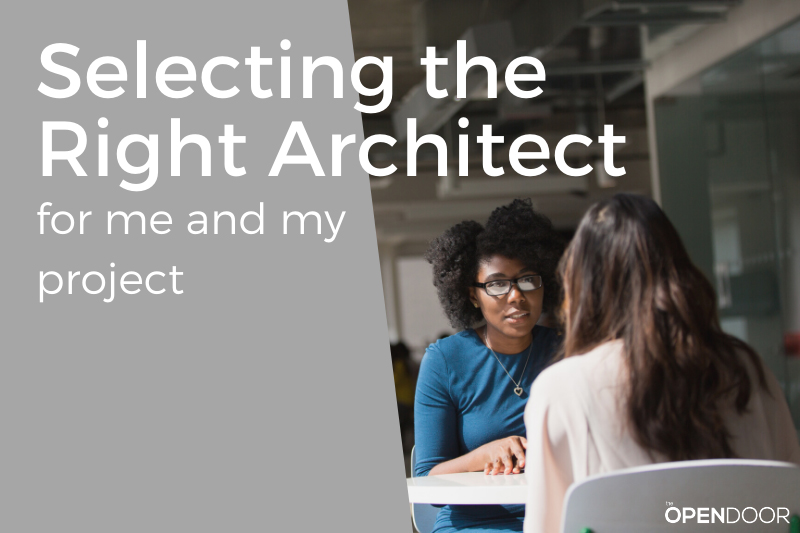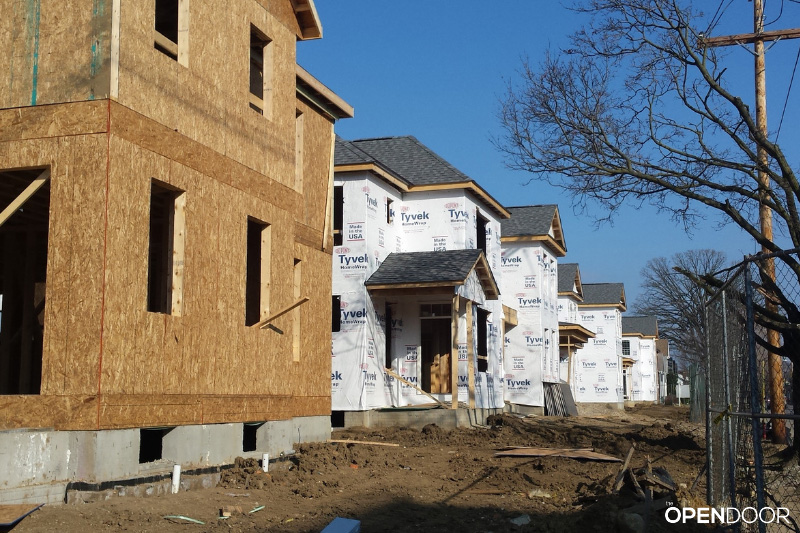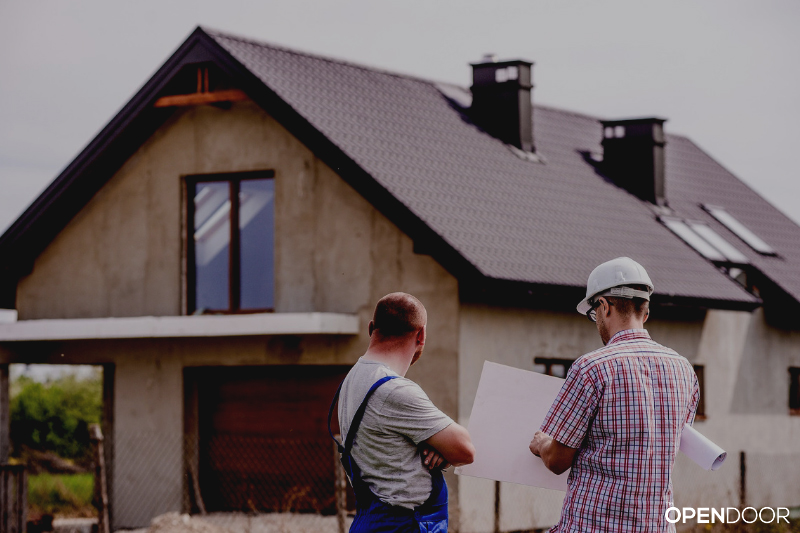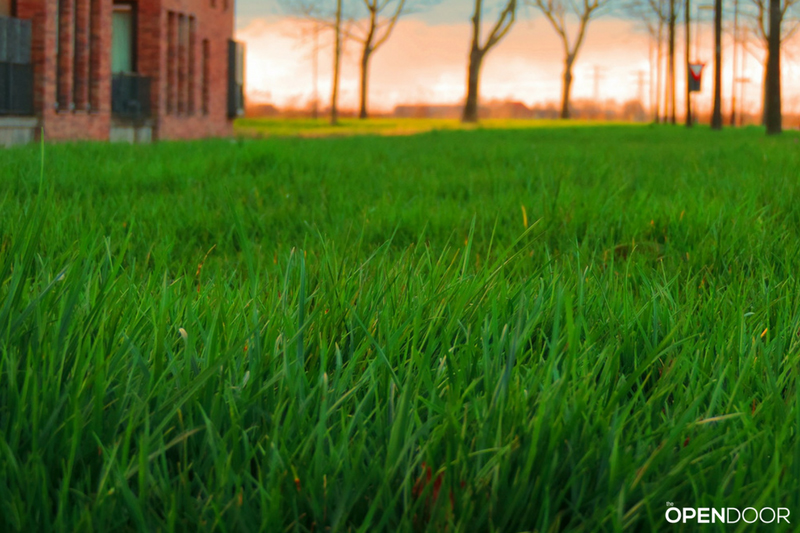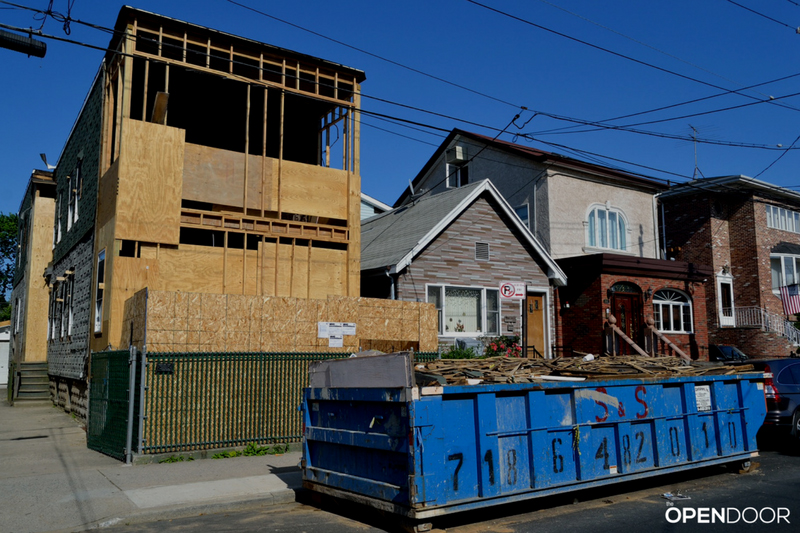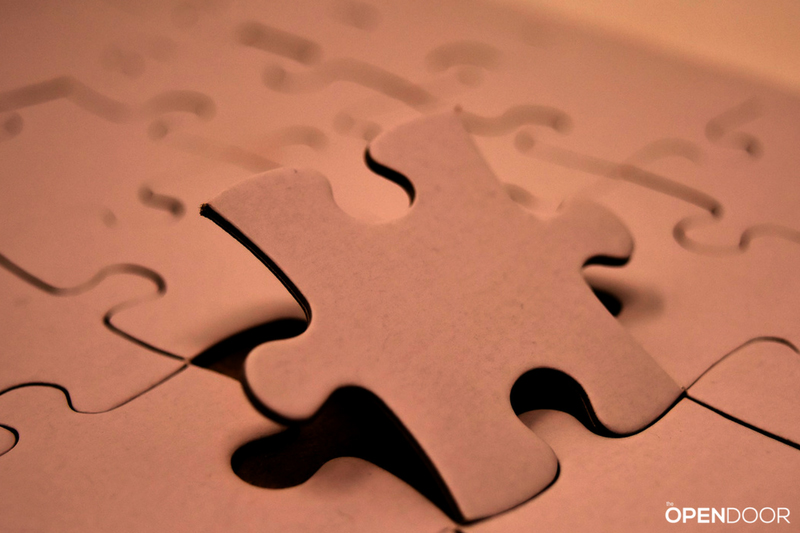“Which comes first: finding land or designing your home?”
People spend years dreaming of the perfect house: sketching ideas on graph paper, looking through stock plans, and visiting builder’s model homes. But designing a home should never be done in isolation.
You can’t just assume that your home design will magically fit on whatever site you choose. It won’t. And worse yet, if you decide to design your home before finding the best site to build on, then you risk spending more time and money in forcing the design to work for that specific site.
As an architect, there’s nothing worse than trying to adjust someone’s beloved design to a site that cries out for an entirely different home design. People often dream up “ideal” floor plans or find the “perfect” stock plan in a book, find land afterward, and then try to marry the two. It’s like trying to force a square peg into a round hole.
Pick the lot before you design your home. But plan ahead and have an idea of what you want to design before you pick the lot.
Pick the lot before you design your home.
The main reason you should select your site before designing is so that you can design your home to be harmonious with the site.
A home design is harmonious with the site when it addresses and responds to features specific of that site like views, natural daylighting, sun exposure and orientation, the terrain, wind, vegetation, drainage, soil conditions, context, climate, nearby buildings, and zoning and code regulations.
The land speaks to you about how to best design on it. Every property has unique features, some you may want to enhance and some you may want to block out. But you won’t know what they are until you find your site.
Let’s dive into this further:
Here are important reasons why you should select the site first. And don’t forget to stick around to the end where I share the most important thing to should do BEFORE you select your site.
Pick the site first so you can design your home to optimize views on and beyond the site.
Until you find your land, you won’t know what the views will be like or which views are worth optimizing. Once you know what the views are, you can design your home to take advantage of them.
For instance, the lot may have a breathtaking view of distant mountains that you want to take advantage of from the living room or bedroom. You’ll want to take this into account when designing your home, but you wouldn’t have known this if you designed your home first.
Also, designing your home first runs the risk of needing to redesign later.
If your site’s main views are to the south, how will a pre-designed home deal with this if the design has large windows to the north instead? Or, what if your design has windows facing the side yard but your site has really close neighbors? Do you really want to be looking into your neighbor’s kitchen? Or worse yet, do you want them to be looking into yours?
By picking the land first, you can plan your home design to take advantage of the good views and block out the less than ideal ones.
Pick the site first so you can design your home to respond to the sun’s movement.
One of the most important things you can do when designing your home is to understand the orientation of the land in relation to the sun, and then design it to respond to how the sun moves. What this means is that when you consider the orientation of the land you can create a home that works well and is comfortable to live in no matter where the sun is in the sky.
And this is important.
In the northern hemisphere, this may mean locating living areas towards the south to maximize daylight and bedrooms to the east to capture the morning sun (and to have cooler temperatures at bedtime).
Natural daylight has been scientifically proven to improve our health and well-being, as well as our emotional state and mood. Optimizing your design to capture natural daylight in a controlled way that manages heat and reduces glare makes such a huge difference in how spaces feel and how you feel in them.
If you design your home prior to selecting land, you may locate rooms or large windows on the wrong side of the house. Your design may create a lot of solar gain that would have proven disastrous to your comfort level (and your wallet if you have to mechanically cool the air).
Pick your site first so that you can design your home to integrate with the landscape.
The slope of your site has a significant impact on your home design and your budget. Site costs can be a large ticket item when you’re excavating a lot of land for basements or using the site in a way that’s less than optimal.
Walk-out basements, slab on grades, and raised pier foundations each have specific terrains that are ideally suited for them and others that are poorly suited.
The design of your home should take into consideration the slope of the property so that it blends in (or sticks out) depending on your project goals and tastes. Setting floor elevations, determining the foundation types, and specifying the location of exterior spaces are all directly related to the topography and surrounding site features. Blindly designing your home without considering how it sits on the land can be a big mistake and can negatively affect your budget. But, if you know what the terrain and landscape are like, you can locate your home in a way that minimizes site disturbance and requires the least amount of excavation.
Pick your site first so that you can design your home to address privacy.
Designing a home to have a connection to the outdoors is important. But, feeling safe and protected is also important.
How do you create a design that limits views into your home and into other homes from your home?
You can achieve this with thoughtful placement of rooms, doors, and windows. You can locate private spaces like bedrooms and bathrooms away from public views. And, you can strategically place windows and doors to manage visual connections. In this way, you can maximize the outdoor connection while still providing a sense of protection and privacy.
This can be tricky to do when you haven’t selected your site yet.
How can you provide privacy when you don’t know where your neighbors are or who may be looking into your home and from where? Select your site first.
Land is fixed. Your home design can change.
It’s important to also remember that land is fixed. Your lot can’t change. It has existing qualities about it. It has boundaries, a certain shape and size, orientation, neighbors, an existing slope (or lack of), views, etc.
Your design, on the other hand, is malleable. It can expand, contract, shift, adapt, mesh, and otherwise be arranged in a way that suits your land specifically and in a way that makes the most of the land AND the home design.
There are SO many different ways to design, plan and arrange the rooms of your home. By designing the home first, you miss key design considerations that a proper site analysis would tell you about how to best utilize it.
Now that we’ve covered the important reasons why selecting a site before designing your home is so important, there’s one important thing you need to do before you select your site: Plan ahead for what you want to build.
Before you select your site, have an idea of what you want to build.
Before you shop around for land to build on, it’s good to have a rough idea of the kind of home you want to create. Determining what’s important to you in a home will help you select land with features that can help you create that home.
How can you plan ahead to get the most optimal site for your home project?
First, set good project goals. Determine what’s important to you. Think about how you can best achieve those important goals with your future site.
At the very least, have a rough idea of the size, number of levels, and general shape of the house you want. This will start to inform how big the site needs to be and its configuration.
Beyond that, it’s also helpful to determine how important certain site characteristics are to you. Things to consider are:
- location (this affects school districts and proximity to nearby amenities)
- context (urban infill, rural, suburban)
- lot shape, size, and orientation in relation to the sun and daylight
- vegetation (open vs wooded site)
- site utilities (this affects your budget and the mech, elec, and plumbing systems’ design)
- access (vehicular and pedestrian)
- topography (flat vs sloped sites)
- views (what do want to see, what do you NOT want to see)
- privacy and security
- climate (temperature, humidity, precipitation)
- cost (what is your budget for the land purchase and how does it relate to your project budget?)
Each of these features can have a direct impact on the design of your home. If you know you want to maximize southern daylight, finding a site that has good sun exposure would be beneficial. If a walk-out basement is important, having a moderately sloped site that allows for this configuration would be ideal.
Setting project goals at the beginning of your project will help you decide which site features are important to you and what kind of sites would best help you achieve those goals.
Each site is unique, and to take full advantage of its features will require some tradeoffs. You won’t find everything you want, so you’ll have to compromise and prioritize certain site features over others. This is easiest done when you have clear project goals to base decisions off of.
With your prioritized list, you can then search for land and base your land selection on criteria you’ve already deemed to be important in helping you achieve your project goals.
A word to note on budget:
Creating a project budget requires budgeting for the construction cost of the home and the cost to acquire land. The cost of building your home is somewhat fixed assuming you don’t have highly complex or atypical construction methodologies. But your construction budget is also based on site development costs.
Various site-specific conditions can significantly impact your design and your budget. The land you ultimately chose may impact the foundation type, how much excavation you have to do, how much vegetation you have to clear, utility hookups, and permitting fees to name a few.
Designing your home before selecting the site may leave you with some nasty surprises that you weren’t expecting, some with significant cost implications. This ultimately may require you to increase your budget or spend time and money to redesign.
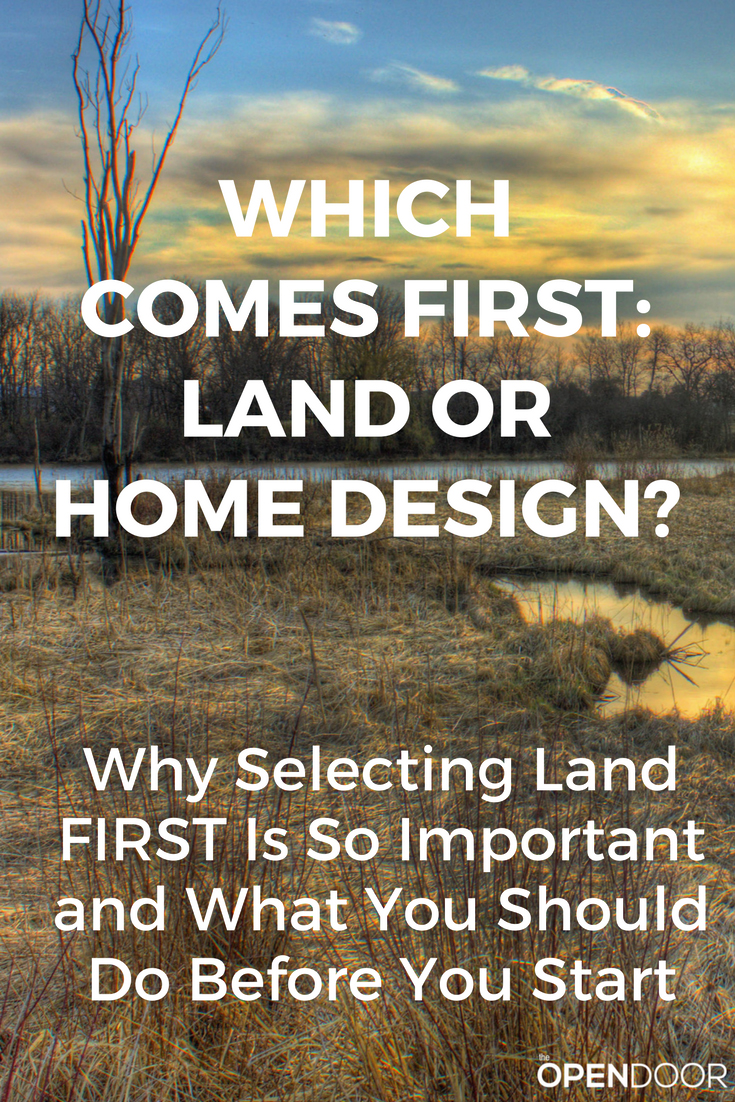
As you can see, there are many site characteristics that influence your home design. Selecting the site first will provide the best chance to create a home that fits the site, is in harmony with it, and that best meets your project goals.
Set project goals, prioritize which site characteristics are most important to you, and base your land selection on that criteria. By planning ahead in this way, you’ll make your site selection process much easier in the end.

